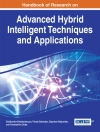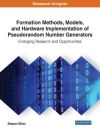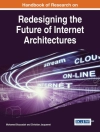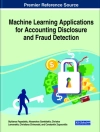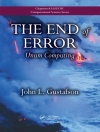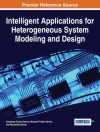The bestselling MCSA study guide, with expert instruction and hands-on practice
MCSA Windows Server 2012 R2 Configuring Advanced Services Study Guide provides focused preparation for exam 70-412 and is fully updated to align with the latest Windows Server 2012 R2 objectives. This comprehensive guide covers 100 percent of all exam objective domains, and includes hundreds of practice questions and answers. You get access to video demonstrations, electronic flashcards, and practice exams, and hands-on exercises based on real-world scenarios allow you to apply your skills to everyday tasks. Organized by objective, each chapter includes review questions and a list of Exam Essentials that help you judge your level of preparedness every step of the way.
Exam 70-412: Configuring Advanced Windows Server 2012 Services is the third and final exam in the MCSA certification series, and was recently updated to cover Server R2. Additions include enhancements to Hyper-V, Storage Spaces, and Active Directory, so it’s crucial that your study guide be up to date as well. This book covers the entire exam, including the new information, with expert instruction and easy-to-follow explanation that helps you to:
- Configure network services, high availability, information protection, and more
- Implement business continuity and disaster recovery solutions
- Get hands-on practice in real-world scenarios
Pass this one last exam and you become a Microsoft Certified Solutions Associate – someone with trusted, demonstrated expertise in the server software with over 83 percent market share. Businesses rely on Windows Server, and the people who understand them are in demand. Thorough preparation is the key to exam success, and MCSA Windows Server 2012 R2 Configuring Advanced Services Study Guide provides all the information you need to know.
Tabla de materias
Introduction xxi
Assessment Test xxxiii
Chapter 1 Configure and Manage High Availability 1
Components of High Availability 3
Achieving High Availability 4
High Availability Foundation 4
Configure Network Load Balancing 6
Install NLB Nodes 7
Upgrading an NLB Cluster 12
Achieving High Availability with Failover Clustering 12
Failover Clustering Requirements 13
Cluster Quorum 15
Validating a Cluster Configuration 16
Creating a Cluster 21
Clustered Application Settings 26
Resource Properties 29
Windows Server 2012 R2 Clustering Features 32
Summary 35
Exam Essentials 36
Review Questions 37
Chapter 2 Configure File and Storage Solutions 39
Configure Advanced File Services 40
Configure the NFS Data Store 40
Configure Branch Cache 44
Configure File Classification Infrastructure
Using File Server Resource Manager 50
Configure File Access Auditing 52
Implement Dynamic Access Control 57
Configure User and Device Claim Types 57
Create and Configure Resource Properties and Lists 61
Create and Configure Central Access Rules and Policies 63
Configure File Classification 66
Implement Policy Changes and Staging 67
Perform Access-Denied Remediation 69
Configure and Optimize Storage 72
Configure i SCSI Target and Initiator 72
Configure Internet Storage Name Server 74
Implement Thin Provisioning and Trim 77
Manage Server Free Space Using Features on Demand 78
Configure Tiered Storage 78
Summary 79
Exam Essentials 79
Review Questions 80
Chapter 3 Implement Business Continuity and Disaster Recovery 83
Protecting the System 84
Backup and Recovery of Active Directory 85
Overview of the Windows Server 2012 R2 Backup Utility 86
Setting Up an Active Directory Backup 91
Restoring Active Directory 95
Active Directory Recycle Bin 96
Restartable Active Directory 97
Offline Maintenance 97
Monitoring Replication 99
Using the ADSI Editor 99
Wbadmin Command-Line Utility 100
Configure Windows Azure Backups 101
Understanding Shadow Copies 103
Vss Admin Command 105
Using Advanced Boot Options 107
Starting in Safe Mode 107
Enabling Boot Logging 108
Using Other Advanced Boot Options Menu Modes 110
Windows Recovery Environment 111
Configure Site-Level Fault Tolerance 111
Using the Startup Repair Tool 114
Summary 115
Exam Essentials 115
Review Questions 116
Chapter 4 Configure Advanced Network Services 119
Working with Advanced DHCP Configuration Options 121
Create and Configure Superscopes 121
Create and Configure Multicast Scopes 122
Implement DHCPv6 125
Configure High Availability for DHCP Including DHCP Failover and Split Scopes 128
Configure DHCP Name Protection 132
Configure DNS Registration 134
The Ins and Outs of DNS 135
DNS Security 135
Configure DNS Logging 138
Configure Delegated Administration 141
Configure Recursion 141
Configure Netmask Ordering 142
Configure a Global Names Zone 143
Analyze Zone-Level Statistics 144
IPAM Administration 101 145
Provision IPAM Manually or by Using Group Policy 146
Configure Server Discovery 149
Create and Manage IP Blocks and Ranges 150
Monitor Utilization of IP Address Space 152
Migrate to IPAM 153
Delegate IPAM Administration 153
Manage IPAM Collections 154
Configure IPAM Database Storage 154
Summary 155
Exam Essentials 155
Review Questions 156
Chapter 5 Configure the Active Directory Infrastructure 159
Overview of Network Planning 161
The Three Types of Networks 162
Exploring Network Constraints 162
Overview of Active Directory
Replication and Sites 163
Replicating Active Directory 163
Understanding Active Directory Site Concepts 164
Understanding Distributed File System Replication 168
Implementing Sites and Subnets 169
Creating Sites 170
Creating Subnets 173
Configuring Sites 175
Configuring Replication 176
Intrasite Replication 177
Intersite Replication 177
RODCs and Replication 184
Configuring Server Topology 185
Using Universal Group Membership Caching 188
Monitoring and Troubleshooting Active Directory Replication 189
About System Monitor 189
Troubleshooting Replication 189
Reasons for Creating Multiple Domains 192
Reasons for Using Multiple Domains 192
Drawbacks of Multiple Domains 194
Creating Domain Trees and Forests 195
Planning Trees and Forests 195
The Promotion Process 199
Creating a Domain Tree 199
Joining a New Domain Tree to a Forest 205
Adding Additional Domain Controllers 206
Demoting a Domain Controller 206
Managing Multiple Domains 208
Managing Single-Master Operations 208
Forest Operations Masters 208
Domain Operations Masters 209
Assigning Single-Master Roles 210
Managing Trusts 211
Managing UPN Suffixes 215
Name Suffix Routing 216
Managing Global Catalog Servers 216
Managing Universal Group Membership Caching 217
Upgrading Existing Domains and Forests 218
Summary 219
Exam Essentials 220
Review Questions 223
Chapter 6 Configure Access and Information Protection Solutions 227
What’s New in Windows Server 2012 R2 with Active Directory Certificate Services? 229
Active Directory Certificate Services Roles 230
Planning the Certificate Authority Hierarchy 231
Installing AD CS 237
Configuring Active Directory Certificate Services 241
Implement Active Directory Federation Services 252
What Is a Claim? 252
What’s New for AD FS in Windows Server 2012 R2? 256
Active Directory Federation Services Installation 258
Workplace Join 271
Device Registration Service 272
Workplace Join Your Device 272
Active Directory Rights Management Services 273
Considerations and Requirements for AD RMS 273
Installing AD RMS 276
Managing AD RMS: AD RMS Service Connection Point 279
Summary 286
Exam Essentials 287
Review Questions 288
Appendix A Answers to Review Questions 291
Chapter 1: Configure and Manage High Availability 292
Chapter 2: Configure File and Storage Solutions 292
Chapter 3: Implement Business Continuity and Disaster Recovery 293
Chapter 4: Configure Advanced Network Services 294
Chapter 5: Configure the Active Directory Infrastructure 296
Chapter 6: Configure Access and Information Protection Solutions 297
Appendix B About the Additional Study Tools 299
Additional Study Tools 300
Sybex Test Engine 300
Electronic Flashcards 300
PDF of Glossary of Terms 300
Adobe Reader 301
System Requirements 301
Using the Study Tools 301
Troubleshooting 301
Customer Care 302
Sobre el autor
William Panek, MCP, MCP+I, MCSA, MCSE, MCTS, MCITP, CCNA, is also a Microsoft MVP. He has been an instructor at Boston University, Clark University, and the University of Maryland, and a consultant and trainer for the United States Secret Service, Cisco, the United States Air Force, and the United States Army. Will teaches Microsoft classes throughout the country for both public and private corporations, and is the author of numerous computer books.




